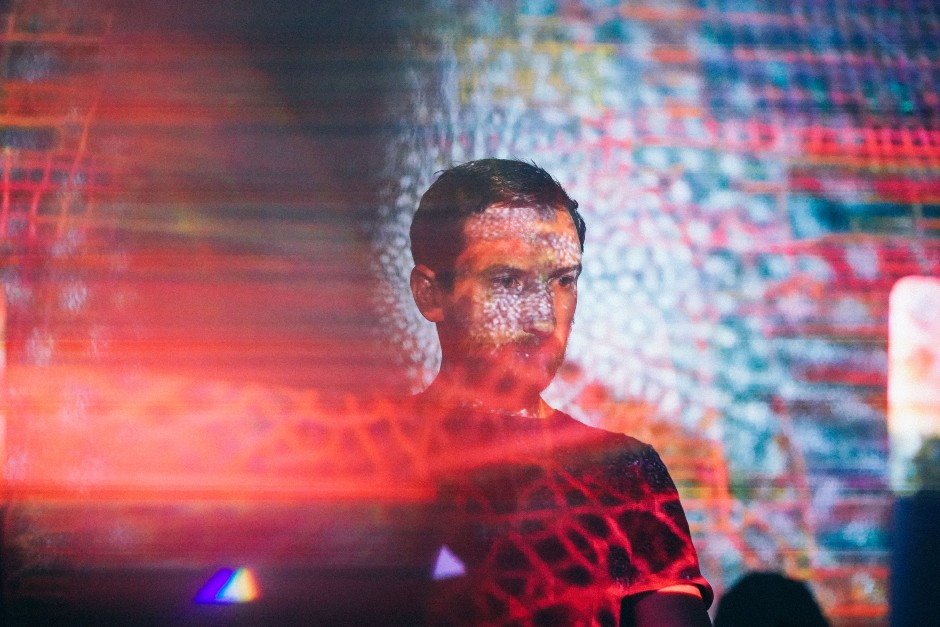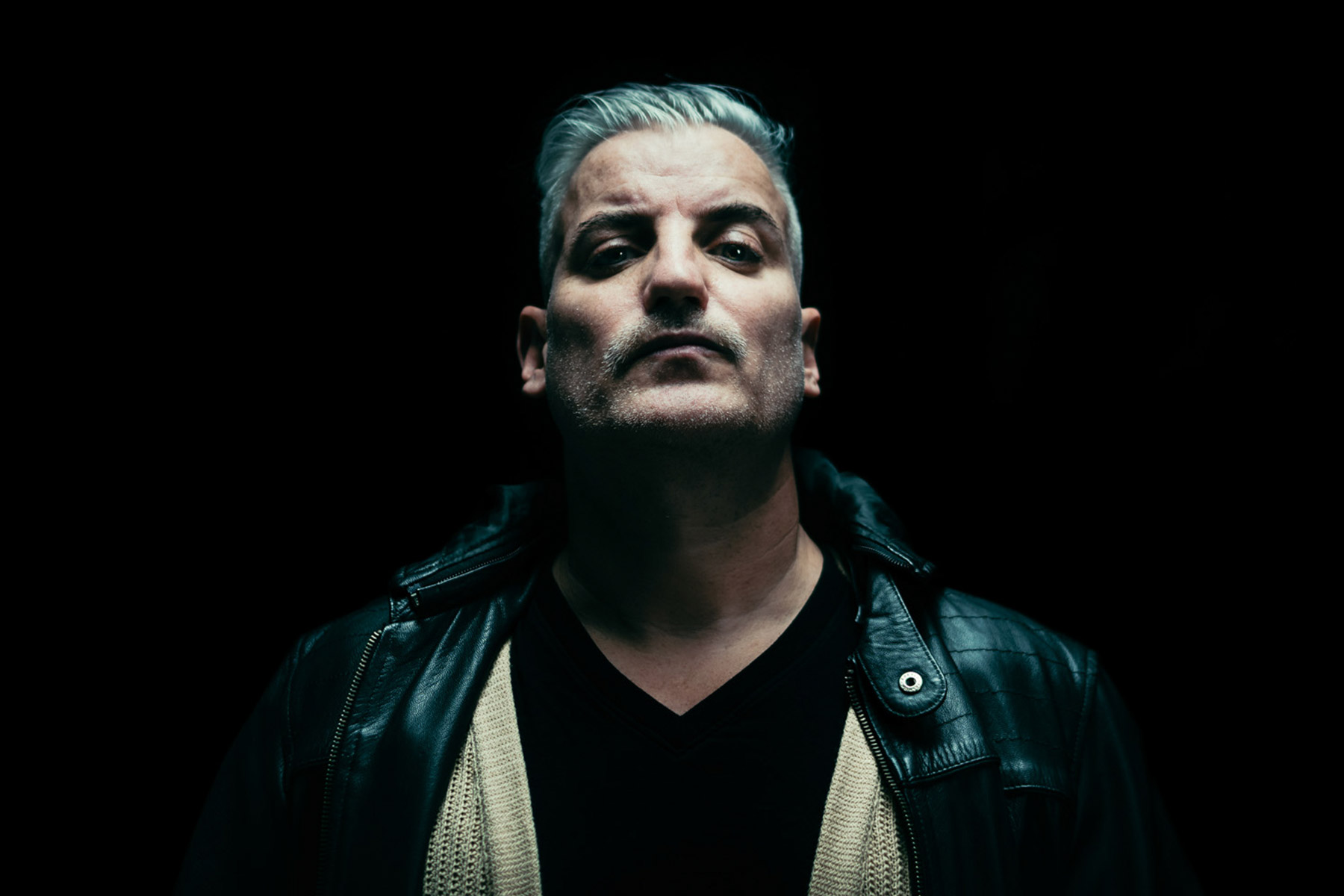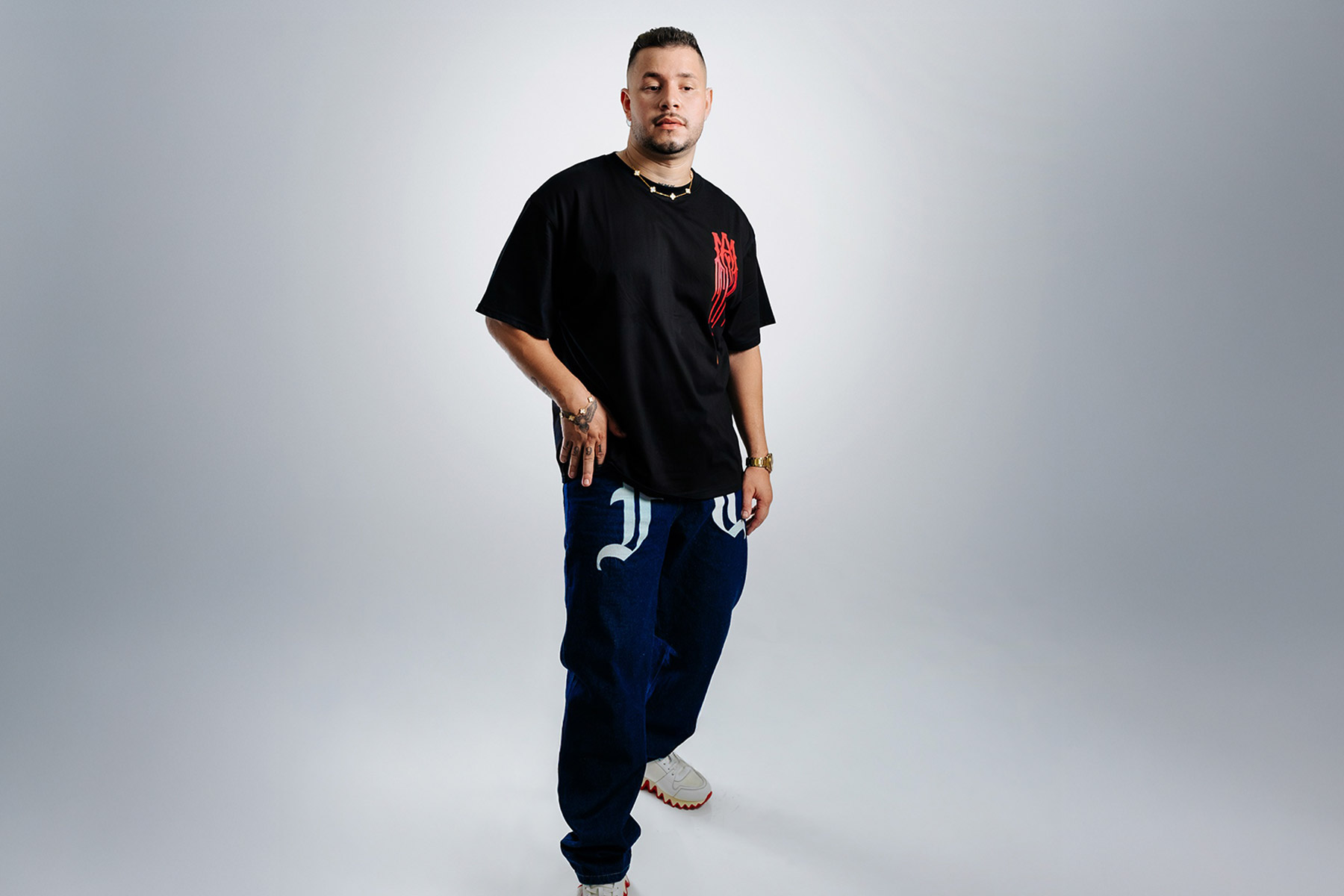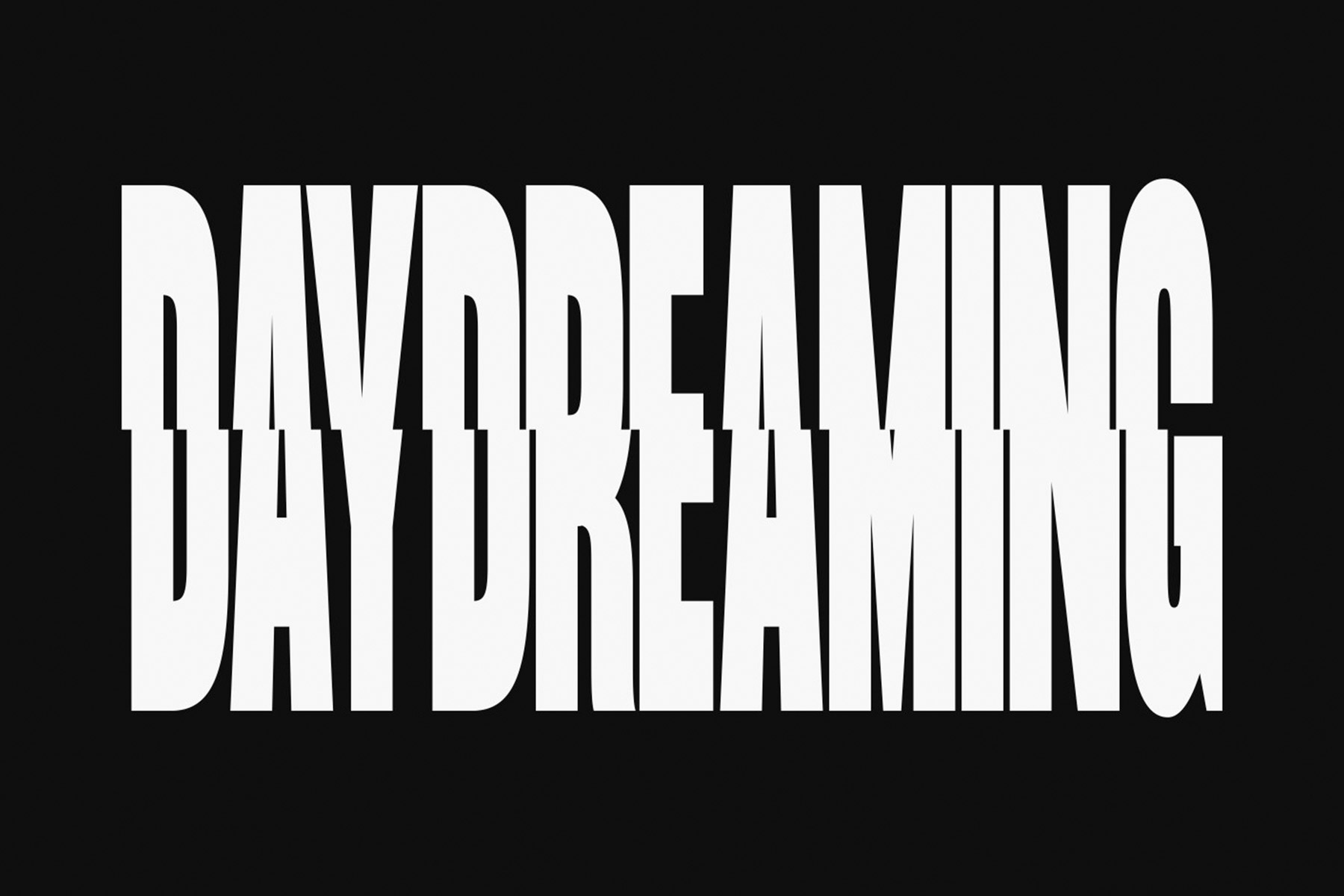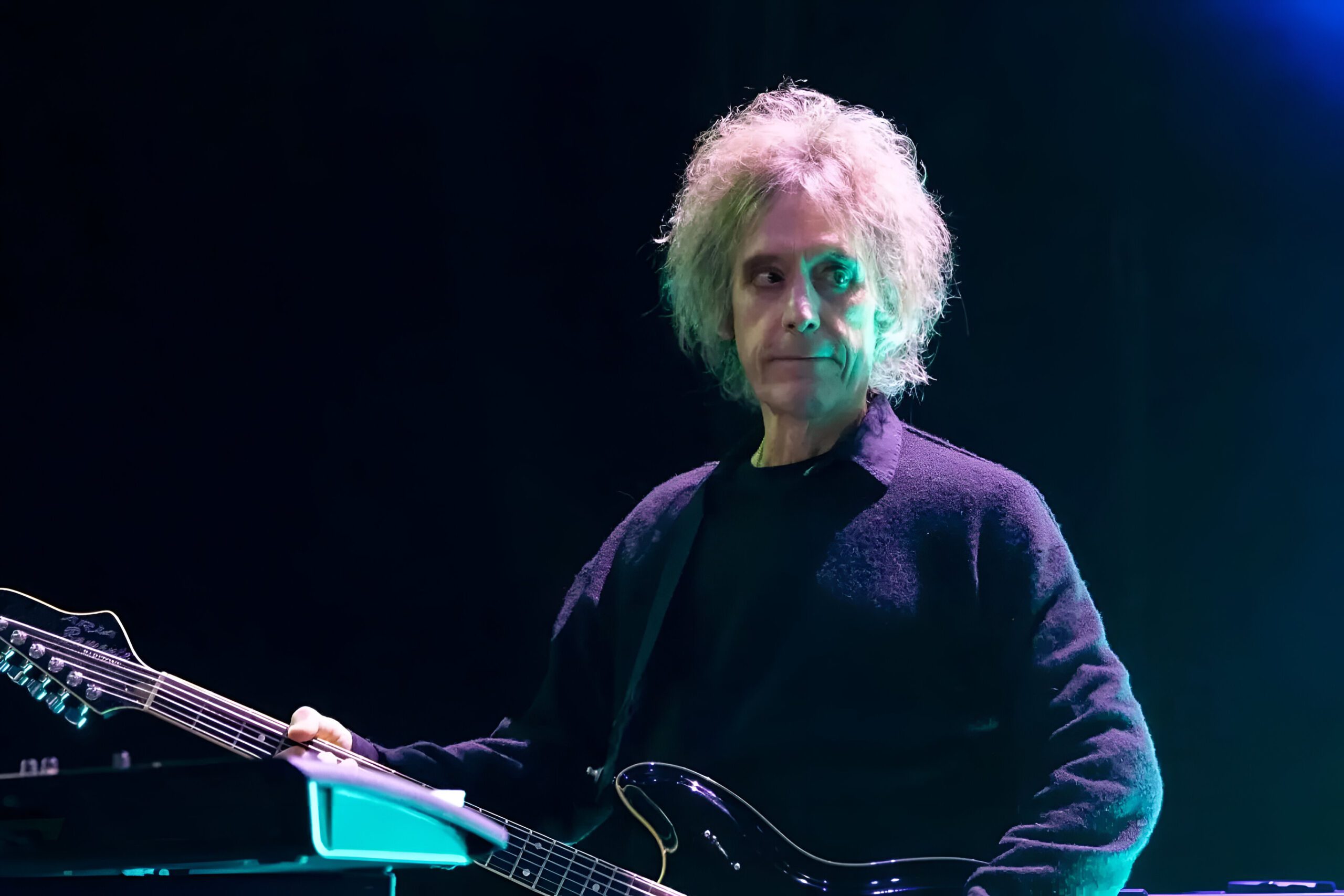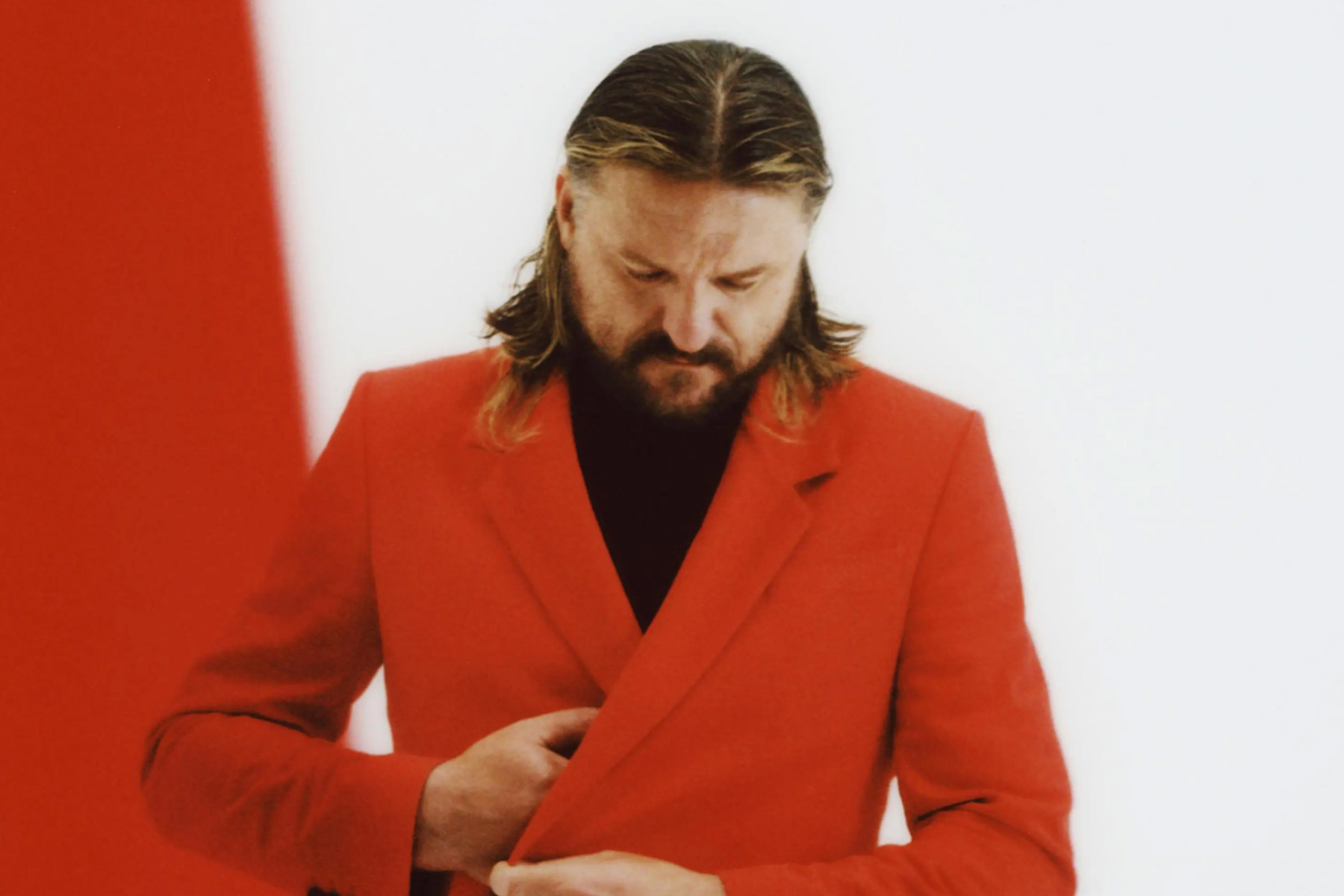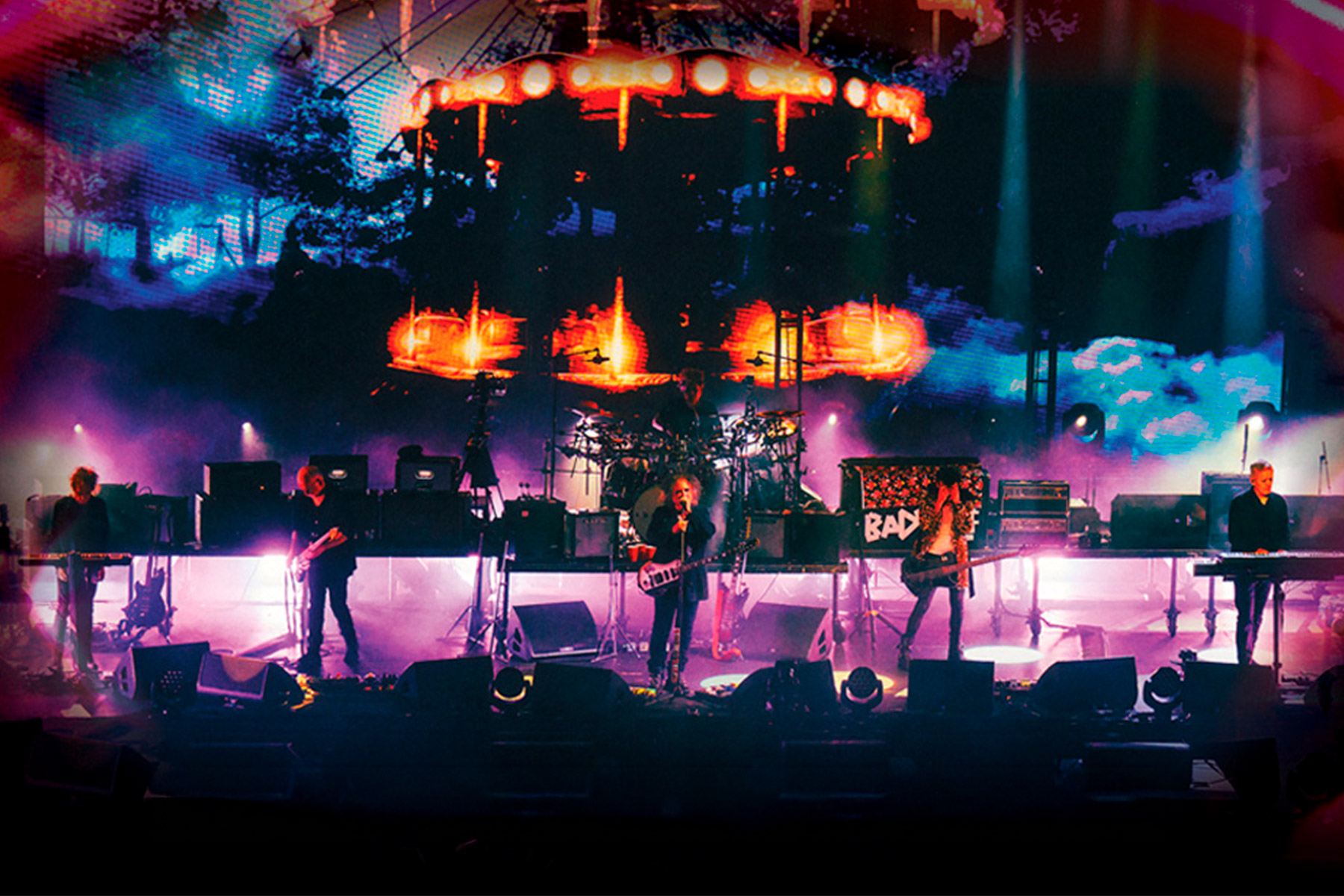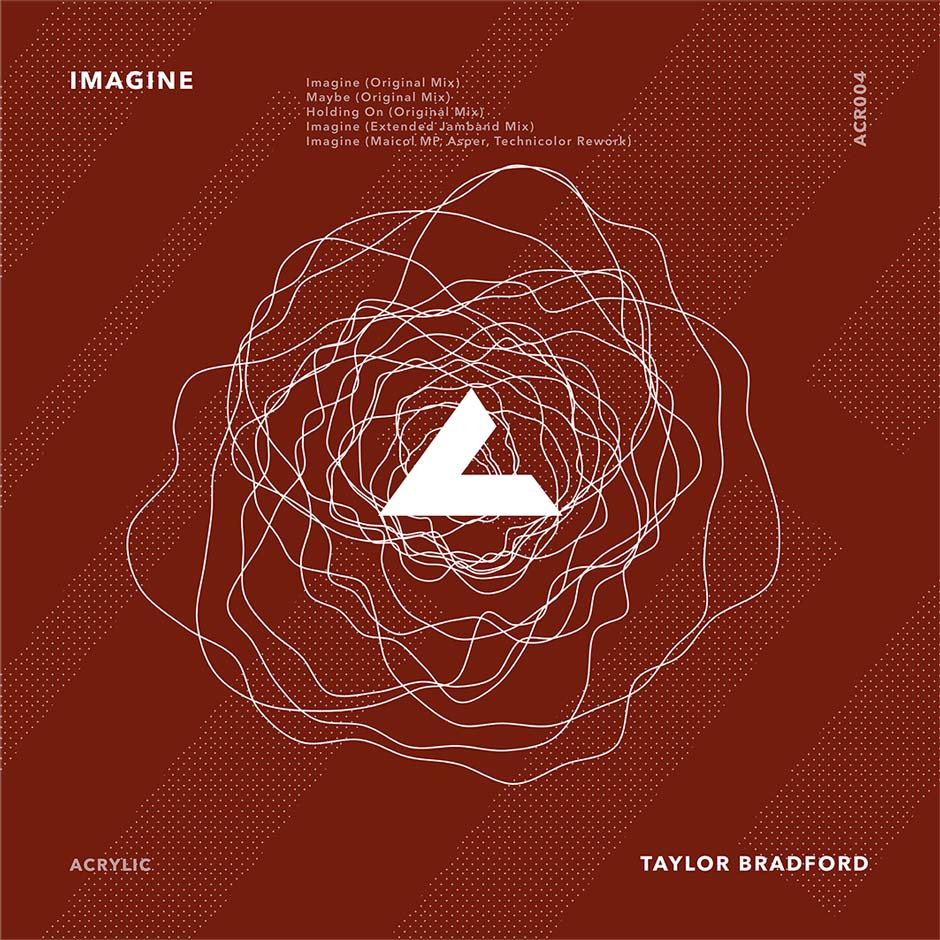Photo/Video Credits: Débora Bertoia
The Ph.D. in computational biology, electronic and tech producer Max Cooper chose a double-edged theme for his audiovisual show in Berlin. Because of the constant dialectic between overwhelming data and desire, the audience comes out a bit as if the art had decompressed a zip in each brain.
Four screens showing multiple images all the time with different motions so people can choose what to focus on, but most of the time is guided by Cooper’s narrative that imposes itself from one screen to the other.
As the abstract expressionist Pollock’s “action painting”, Cooper’s technique seems at times to use all his strength to impact the public with a large amount of data but also leaving moments of dropping and absence provoking the yearning for infinite…
We caught up with Max Cooper to talk about his newest project ‘Yearning For The Infinite’.
Electronic Groove: Hi Max, thanks for your time today. Framed in the Barbican Center of arts and learning, why diving into the topic of the ungraspable, endless amount of data that we are relentlessly subject to?
Max Cooper: Thanks for the invite. It’s not just about the data barrage, I set out to make a wider audio-visual project about advances in technology and the human drive behind all the changes we see – our yearning for the infinite, our endless pursuit of more, in many forms. Everyone strives for more of something. I used lots of different visualization of the infinite, set against imagery of people in endless motion, to tell the story.
EG: Do you think that music and/or audiovisuals can somehow help to manage the overwhelming amount of data for the current “human wiring”?
Max Cooper: Music is a nice way to escape to somewhere more peaceful and structured, yes.
EG: How could you describe the creative process in this particular performance? What does it consist of?
Max Cooper: I started with the idea around societal and technological advance, boiled that down to the “yearning for the infinite’ idea, then wrote up many chapters for the different ways in which the ideas could be visualized. I then scored the music to these chapters and found animators to work on each one, then we finally brought the music and visual together and made changes where needed. Then I built a live performance system to have control over up to 8 visual layers around each live space, synced to the musical form and all under my -live- control. The idea was to make each space an audience engulfing canvas, to try to further enhance the infinite experience.
EG: Considering that much of your work finds its inspiration in science, how do you reconcile the analytical, technical and intuitive elements when conceptualizing a new project?
Max Cooper: That’s a good question, there’s always the technical considerations of a piece of music where I try to structure it in a way which relates to the visual ideas and form, but beyond those considerations’ music is still fundamentally a personal emotive expression, and I don’t want to lose that amongst technical considerations. So usually the technical side forms a structure within which I can then express the more human side of each piece.
For example with the track, Penrose Tiling, I had an aperiodic tiling system visually (by Jessica In) and I created an aperiodic rhythmical system musically to match, using prime number loop lengths. So no two bars are ever the same structurally, just as no part of the visual tiling can be transposed to match another part (so it can tile in an infinite plane without repeats, the link to the wider project). Once I had that system in place I then worked on the melodies and harmonies to express my feelings about this beautiful visual system. That process being intuitive, following on from the analytical beginnings.
EG: Do you structure your A/V performance based on an underlying narrative? In that case, do you intend to deliver a specific message to the audience or do you prefer to leave it to free interpretation?
Max Cooper: Yes, there is always a narrative. The Emergence narrative was great because it could be communicated without needing much explanation. YFTI requires a little more background to be made clear, although on the basic level the link between natural/scientific structure, and people as part of that system, can be seen.
EG: Taking into consideration that what you do transcends the limits of music, how would you define your art in one phrase?
Max Cooper: I’m interested in fundamental natural aesthetics. So the art hiding in there in science, and the aesthetics of nature’s building blocks. The more I look into these ideas the more I find. Nature seems to be made of beautiful yet simple structures, the richest behaviour compressed into the most condensed forms. I think that’s fascinating, all of these projects are a great excuse for me to spend my time learning about things I find fascinating.
EG: To close the interview, let’s jump to a short Ping-Pong questionnaire…
EG: A woods sunset or a beach sunrise?
Max Cooper: Woods
EG: Is the medium the message, vice versa or both?
Max Cooper: None of the above (the essence of information is independent of its particular physical encoding. For example, the power of music is independent of whether you listen on CD or streaming, for example – the medium and message are independent).
EG: Analogue, digital or both?
Max Cooper: Both
EG: 110 or 140 bpm?
Max Cooper: 110
EG: A favorite piece of music and a piece of art?
Max Cooper: I’ll change my mind tomorrow, but I could say, Is Drop by Bing and Ruth, and Pollock’s Blue Poles.
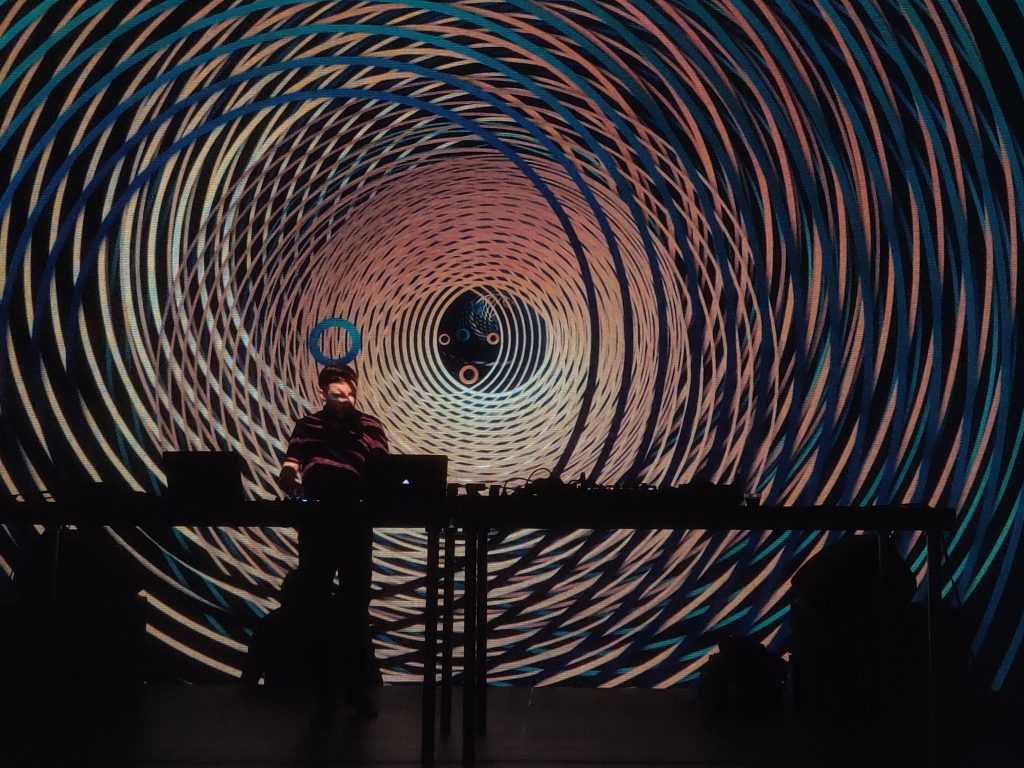
Follow Max Cooper: Website | Facebook | Soundcloud | Instagram


